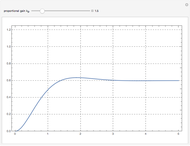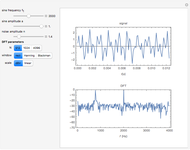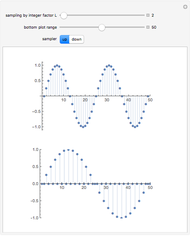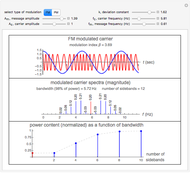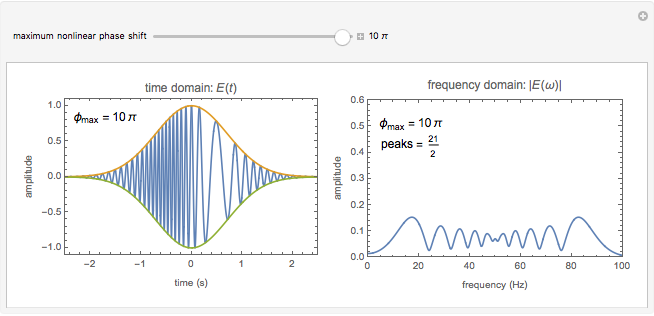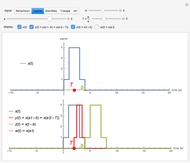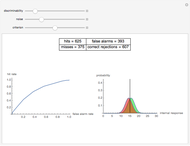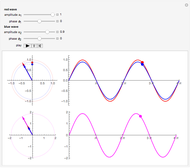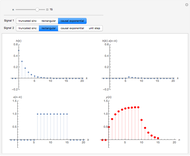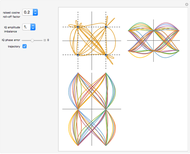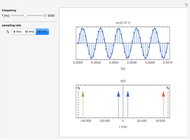Digital Modulation: Quadrature Phase-Shift Keying (QPSK) Signal Constellation and Eye Diagrams

Requires a Wolfram Notebook System
Interact on desktop, mobile and cloud with the free Wolfram Player or other Wolfram Language products.
A digitally modulated signal is represented by its equivalent complex low-pass or base-band signal. The real and imaginary parts of this signal are called the quadrature components  and
and  . The figure shows the signal constellation in the complex plane and the eye diagrams of the quadrature components for QPSK (quadrature phase-shift keying). The eye diagram shows how the waveforms used to send multiple bits of data can potentially lead to errors in interpretation. You can change the roll-off factor of the base-band pulse-shaping filter to see the effect of an amplitude or phase imbalance of the modulator.
. The figure shows the signal constellation in the complex plane and the eye diagrams of the quadrature components for QPSK (quadrature phase-shift keying). The eye diagram shows how the waveforms used to send multiple bits of data can potentially lead to errors in interpretation. You can change the roll-off factor of the base-band pulse-shaping filter to see the effect of an amplitude or phase imbalance of the modulator.
Contributed by: Carsten Roppel (March 2011)
Open content licensed under CC BY-NC-SA
Snapshots
Details
In a quadrature modulator,  is multiplied with
is multiplied with  and
and  is multiplied with
is multiplied with  , where
, where  is the carrier frequency. An amplitude imbalance corresponds to unequal amplitudes of the local carriers, while a phase imbalance corresponds to a phase shift. The complex low-pass signal is given by
is the carrier frequency. An amplitude imbalance corresponds to unequal amplitudes of the local carriers, while a phase imbalance corresponds to a phase shift. The complex low-pass signal is given by  .
.
For ideal modulation,  and
and  , and the complex low-pass signal is simply
, and the complex low-pass signal is simply  .
.
J. G. Proakis, Digital Communications, 5th ed., New York: McGraw–Hill, 2008.
Permanent Citation










